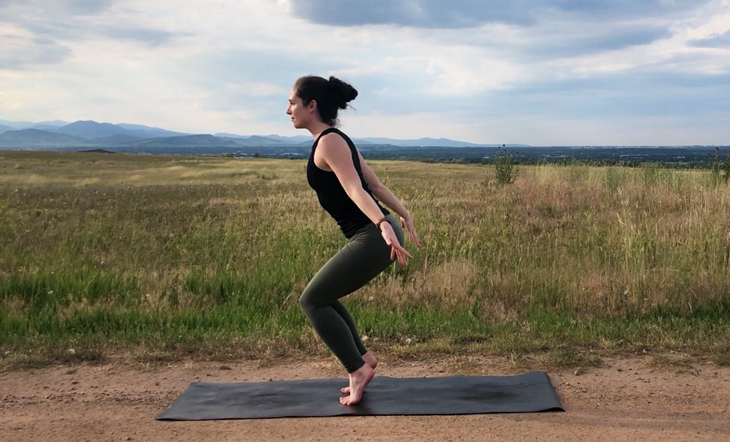Fire Log Pose: A Guide to Agnistambhasana for Deep Hip Opening
The post Fire Log Pose: A Guide to Agnistambhasana for Deep Hip Opening appeared first on The Yoga Nomads.
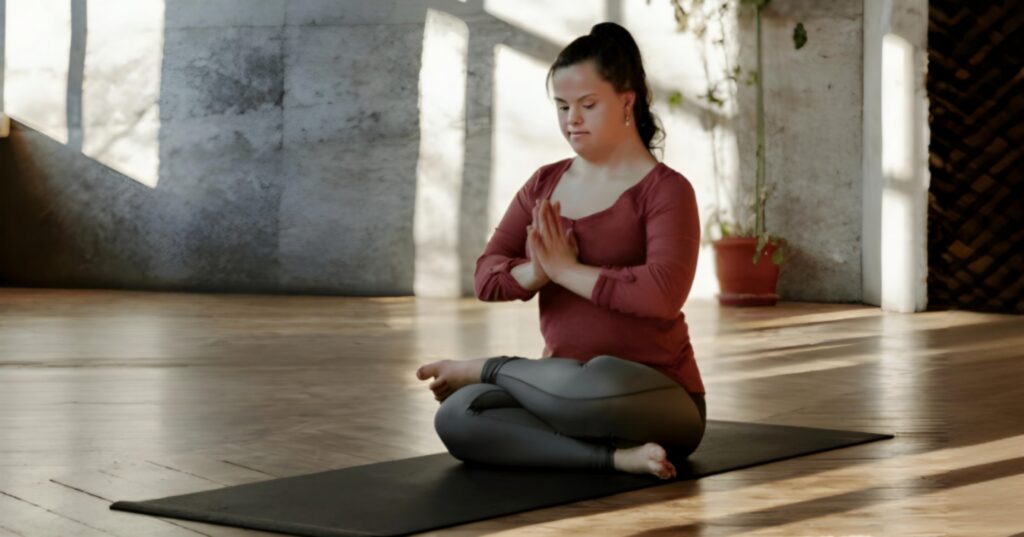
Key Takeaway
Agnistambhasana, or Fire Log Pose, is designed to ignite the body’s internal fire, promoting energy flow and balance. To safely practice Fire Log Pose, follow a step-by-step guide that emphasizes proper alignment and breathing to maximize its effectiveness. Regular practice of Fire Log Pose offers numerous physical and mental benefits, including improved hip flexibility, reduced stress, and enhanced focus.
If, like many individuals, you spend all day seated in a chair at work, you’ve likely experienced the aches and pains resulting from tight hips. As life has become increasingly sedentary, I believe everyone can benefit from a good hip opener.
One of the most effective and powerful poses to release tight hips is Fire Log Pose. This seated stretch enhances flexibility and is a foundation for deeper hip work. The benefits are multifaceted, as you’ll soon learn.
As we navigate through the intricacies of this pose together, I’ll share my insights as a yoga teacher in achieving correct alignment and creating a balanced sequence. There’s a wealth of valuable information to cover, so let’s get started!
Watch our recommended steps for entering, holding, and exiting the pose.
Translation and Meaning of Agnistambhasana
The name Fire Log Pose is a direct translation of its Sanskrit name, Agnistambhasana. The traditional name might look complicated, but it is easy to understand when we break it down.
Agni, pronounced “Ag-nee,” is “fire” Stambha, pronounced “stahm-ba,” means pillar or log Asana is a pose.I’ve also heard some teachers call this “Double Pigeon Pose” or “Square Pose,” referring to the shape of the legs.
Metaphorical Meaning
In the yoga world, agni or fire is an element of transformation. This comes into play in Fire Log Pose in a couple of ways.
According to somatic psychology, people tend to store emotions in their hips. By targeting this area of the body with a deep stretch, we can release pent-up emotions, thereby purifying ourselves and igniting a spiritual awakening.
Another interpretation refers to our inner fire or discipline practitioners must use to practice such an intense pose. It takes a high degree of determination to breathe through discomfort, let go, and experience release.
Step-by-Step Instructions to Fire Log Pose
Are you ready to stoke your inner fire with this intense exercise? Follow these instructions to practice safe and correct alignment in Fire Log Pose.
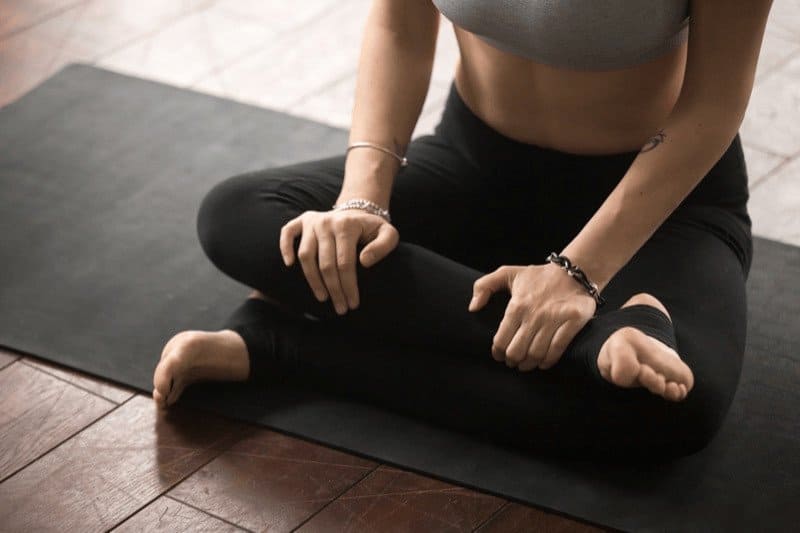
Getting into Position
Take an easy seat on the floor with your legs crossed. Sit tall, lengthening your spine. Unfold your legs slightly and partially extend them in front of you. Bend your left knee to a 90-degree angle, sliding your left foot under your right knee. Your left shin should be parallel with the short edge of your mat, your foot flexed. Use your hands to pick up your right leg and place it directly on top of your left. Set your right ankle on the opposite thigh and flex your foot. The sole of your right foot should be aligned with the outer edge of your left thigh.Holding and Releasing the Pose
Tilt your pelvis forward slightly to sit directly atop your sitting bones, keeping length in your lumbar spine. Place your hands gently on your upper legs, choose a mudra, or keep your fingertips pressing into the floor by your outer hips. Maintain a steady, even breathing pattern and hold the stretch for 5 to 10 easy breaths. Exit the pose by removing your top ankle from the opposite thigh. Switch sides, keeping your right leg underneath and stacking your left shin on top of your right.Breath Control and Body Awareness
I find it helpful to visualize my breath moving through any areas of tightness—particularly when easing into poses like this one where discomfort may arise due to glute tension or tight hips.
Practice body awareness, becoming attuned to the difference between pain and discomfort from releasing tension.
My best advice is to pay attention to your breath. Discomfort may be intense but gradual, and you can typically breathe through it. Conversely, pain is sharp and shooting and is more likely to take your breath away.
Modifications for Individual Needs
For those with tighter hips, finding a comfortable position is crucial. You might not be able to stack your legs perfectly at first. That’s okay! You can try several modifications, working with your own range of motion as you build up flexibility.
Support With Props
Using props can significantly increase comfort in Fire Log Pose, especially if you have limited mobility due to tight hips.
Blankets: There are a couple of options for using blankets in Fire Log Pose. First, sit on a folded blanket to cushion your sit bones. This also elevates the hips slightly, helping you keep your lumbar spine long. Alternatively, place a blanket between your top and bottom legs to cushion your ankle and knee. Blocks: If there’s a lot of space between your knees and the floor, place a block under each knee to avoid straining. Wall: Keeping length in your spine is crucial in Fire Log Pose. To help with this, sit against a wall to maintain correct alignment. Bolsters: In a restorative or yin class, I like to stack two bolsters in front of my legs and lean forward, placing my forearms on the bolsters and resting my forehead on my arms. This deepens the stretch while providing stability and support.Leg Position
If stacking both legs is too intense or uncomfortable, try stretching one side at a time. Begin seated with both legs extended. Then, bend your right knee and cross your ankle over your left thigh.
Hold for 30 seconds to a minute, then release your right leg down and switch sides, crossing your left ankle over your right thigh.
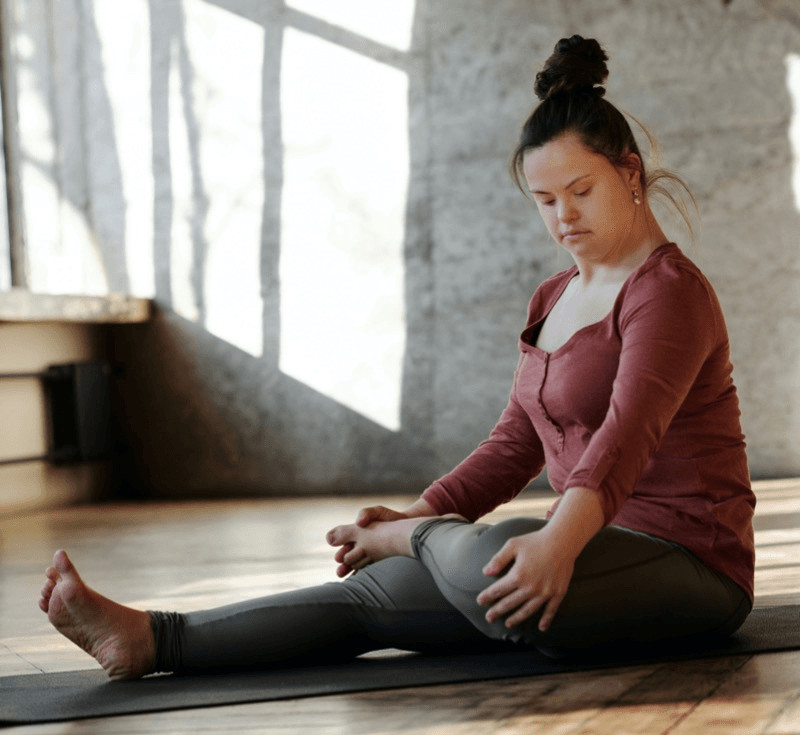
Chair Variation
Practitioners with limited mobility who cannot get down to the floor can try a single-leg variation of Fire Log Pose while seated in a chair.
Sit a bit forward on the chair seat so your feet are flat on the floor and your back is straight. Lift your left leg and cross your left ankle over your right thigh.
Flex your left foot and open your left knee to feel a deep stretch in your left outer hip. When ready, lower your leg with control and switch to legs to stretch your right side.
Modifications aren’t just for individuals with limited mobility. Everyone’s body is different, and even if you have a high degree of flexibility, props can help you remain comfortable if you plan to hold the pose longer.
Contraindications and Safety Precautions
This yoga posture pushes the range of motion in your hips and knees. It provides a deep stretch that feels great for many individuals but might not be safe for everyone. Take great caution when practicing Fire Log Pose by using props, or try a more gentle hip opener if you experience any of the following issues.
Significant tightness in the hips, knees, or groin area Injury or recent surgery in the hips, knees, or ankle joints Chronic back issues, including sciatica: Although Fire Log Pose may help these issues in some instances, it’s best to consult with a doctor before you try this deep stretch. 2nd or 3rd trimester of pregnancy, as the body produces high levels of the hormone relaxin, which could lead to overstretchingRespecting Limits
Protecting your knees involves not bearing weight they cannot handle. Practitioners eager to achieve greater flexibility may be tempted to press their top knee down in Fire Log Pose, pushing past their natural range of motion.
It’s crucial to remember that flexibility takes time, especially if your muscles are very tight. Instead of pushing past your limits, try to approach with surrender. Deep breaths and patience are far more effective in stretching than using force.
If at any moment you feel any sharp pain on the outside of the knee, gently come out of the pose immediately.
Creating Stability
Maintaining stability in Fire Log Pose helps protect against injuries. Use props like blocks or cushions under your sit bones if necessary, especially if you experience tightness in your hips or groin area.
By respecting these contraindications and safety measures, practitioners can enjoy the benefits of Fire Log Pose safely and comfortably. Everyone has different capabilities; what works for one may not work for another.
Fire Log Pose Benefits
Most individuals recognize Fire log pose as an intense hip opener, but its benefits don’t stop there. This yoga posture nurtures both your body and your mind.
Physical Advantages
Joint mobility and flexibility: Fire Log Pose can help relieve tightness in the hip, knee, and ankle joints to help you maintain or increase your range of motion. Deep stretch of hips and groin: Releasing tension from your lower body is especially important if you spend a lot of time sitting. Tones abdominal muscles and pelvic floor: The seated position of Fire Log Pose requires engaging the abdominal muscles to support the lumbar spine and simultaneously strengthens the pelvic floor. Lower back pain relief: Tight outer hip muscles can contribute to chronic lower back pain; stretching these areas may provide some relief. Better posture: Keeping your spine long and straight in Fire Log Pose strengthens your back muscles to support better posture in everyday life.Mental and Holistic Benefits
Stress relief: Breathing deeply in Fire Log Pose calms your mind and activates your parasympathetic “rest and digest” response. Greater mind-body connection: This pose requires careful attention to correct alignment, fostering greater body awareness. Increased resilience: Releasing tight hips may take several minutes. Breathing through tension during this intense stretch reminds us of our capabilities to handle uncomfortable situations we encounter in life. Grounds and balances energy: From the perspective of somatic psychology and energetic principles, opening the hips can release pent-up emotions and help your energy flow freely.Variations of Fire Log Pose
Practitioners who feel comfortable in Fire Log Pose can deepen their experience with these simple variations.
Add a Forward Fold
From Fire Log Pose, inhale and reach the crown of your head up to lengthen your spine. As you exhale, hinge from your hips and reach your arms forward, bringing your hands to the floor. Lower your chin to your chest and drop your head, continuing to breathe deeply.
Stay in your seated Fire Log forward fold for 30 seconds to a minute, then rise. Be sure to repeat the stretch with your other leg on top.
Fire Log Pose with a Twist
Begin in regular Fire Log Pose with your left shin stacked on top of the right. Reach your arms up as you inhale; as you exhale, twist your upper body to your left, bringing your right hand to your left hip and your left hand to the floor behind you.
Hold your twist for 30 seconds to a minute, then release gently. Switch your legs and repeat the twist with your right shin stacked on top of the left and turning to the right.
Incorporating Fire Log Pose into Your Yoga Practice
Warming Up
When I plan to use Fire Log Pose in a yoga class, I’m careful to include plenty of poses that gradually open up the hips and groin area as part of the warm-up. Bound Angle, Yogi Squat, and Lizard Pose are all great options!
Sequencing Fire Log Pose
I usually prefer to practice Fire Log Pose toward the end of my yoga session, pairing it with other seated poses that stretch the hips, groin, and legs. Head to Knee Pose, Seated Forward Bend, and its wide-legged variation provide easy transitions from Agnistambhasana.
Ardha Matsyendrasana is another favorite of mine to use after Fire Log Pose. It works well as this pose stretches the outside of the hip and the hamstrings. Plus, the motion of the spinal twist feels great on my back.
If you’re interested in putting together your own sequence, remember we have a library of yoga pose tutorials to help!
Consistent Practice
Frequency and duration are fundamental for reaping optimal benefits from any asana, including Fire Log Pose. Integrate it regularly, but avoid overdoing it, which might lead to strain or injury. Listen closely to your body’s signals during practice and gradually increase time as flexibility improves.
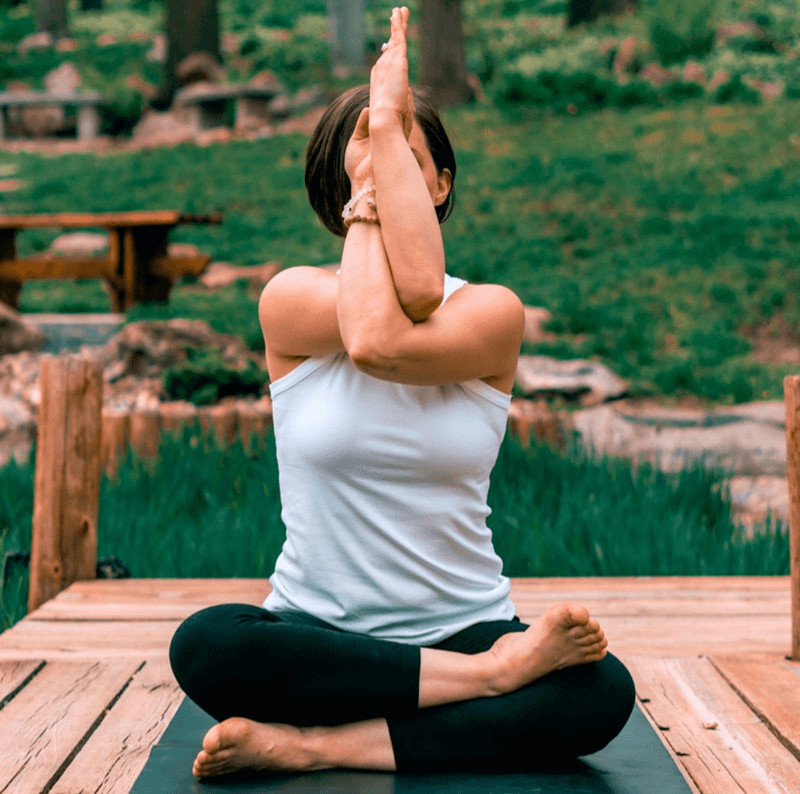
Regardless of their flexibility or experience, everyone can benefit from incorporating Fire Log Pose into their practice. This asana encourages flexibility in the hips while bringing a sense of stability and balance to both body and mind.
Embrace the journey of self-discovery through this profound stretch, stoking the flames of transformation. As you continue on your yoga path, may Fire Log Pose be a source of inspiration and support your overall health in life on and off your mat.
Pop quiz! 🧘🤔
Fire Log Pose can relieve tension after long periods of sitting.
Fire Log Pose requires extensive felxibility in the shoulders.
Beginners can modify Fire Log Pose with props like blankets or blocks.
Frequently Asked Questions
What is the Fire Log Pose?
Fire Log Pose, also called Agnistambhasana or sometimes Double Pigeon Pose, is a seated yoga posture that stretches the outer hip and glutes intensely.
Are there modifications for beginners in Agnistambhasana?
Yes, beginners can use props like blocks or blankets to reduce strain and maintain alignment.
What safety precautions should be taken during Agnistambhasana?
Avoid this pose if you have severe knee or hip issues. Always engage your core and move into the pose gently to prevent injury.
What are some benefits of practicing Fire Log Pose?
Practicing Fire Log Pose can improve hip flexibility, release tension in the groin area, and promote better posture.
How can I incorporate Agnistambhasana into my yoga practice effectively?
Incorporate it gradually by holding for short periods initially and increasing time as comfort improves; include it in sequences targeting hip openness.
Thanks for your feedback!

 Hollif
Hollif 










